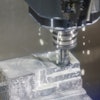WASHINGTON (AP) — U.S. factories renewed hopes that they can be an engine of economic growth as they revved up production of big-ticket goods for consumers and businesses in October.
Overall production at the nation's factories, mines and utilities was unchanged last month — but that was only because of a sharp drop in utility output due to warmer-than-normal weather, the Federal Reserve reported Tuesday.
The key manufacturing sector gained 0.5 percent in October, led by increased output of long-lasting goods such as autos, appliances and business equipment.
The Fed also revised September's factory production to a 0.1 percent gain, boosted by steel, machinery and chemical producers. Earlier reports had said factory output fell 0.2 percent that month.
Factories are the largest single component of industrial production. They helped lead the economy out of recession but have grown more slowly in recent months. October's solid gain eased fears that the manufacturing recovery could stall, weighing down the broader economy.
The report shows that manufacturing will grow faster than the broader economy through 2013, said Daniel Meckstroth, chief economist at the trade group Manufacturers Alliance/MAPI. Meckstroth said demand for factory goods is growing overseas, while U.S. consumers and businesses still are making purchases that they put off during the recession.
"Strong growth in the third quarter just confirms that the fourth quarter will be strong as well," Meckstroth said. "People have been postponing auto purchases and furniture purchases, and I don't think you've scratched the surface on (demand from) business equipment spending and exports."
Production by utilities fell by 3.4 percent in October, as warm weather eased demand for electricity and gas heat. Mines produced 0.1 percent less.
U.S. industry operated at 74.8 percent of its capacity in October, unchanged from September.
Factory production is still 9.2 percent below its pre-recession peak in Dec. 2007, Meckstroth said. He said the manufacturing sector shrank more than the broader economy during the recession, so it must grow more quickly to recover from the bust.


















